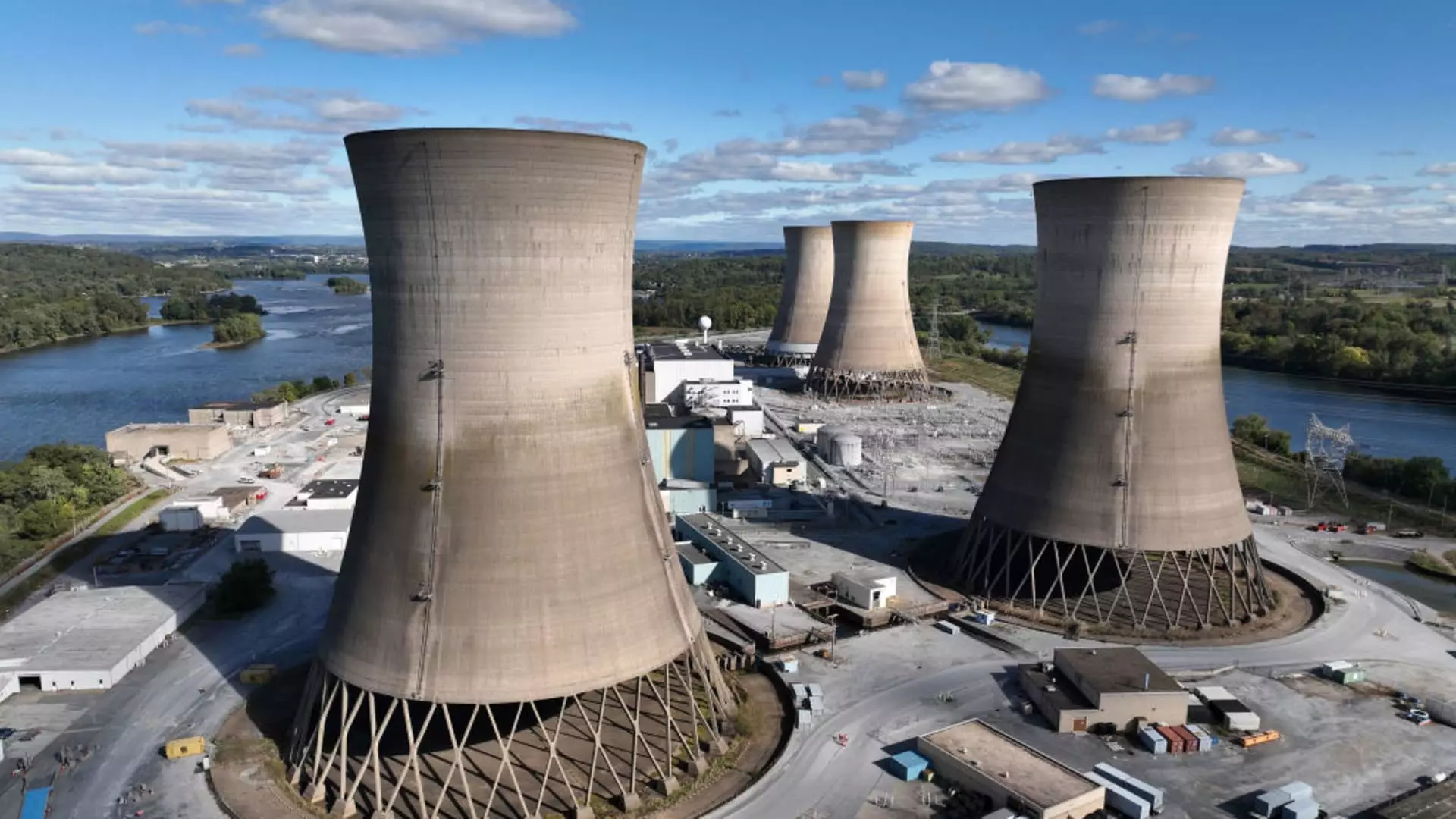The Rise of Small Modular Reactors: A New Era for Nuclear Power in the Tech-Driven World

The convergence of technology and energy has brought forth a new frontier in nuclear power, with Small Modular Reactors (SMRs) emerging as a promising solution to the growing demand for clean energy. As tech giants increasingly pivot towards sustainable sources to fuel their extensive operations, SMRs are positioned to play a crucial role. This article explores the current landscape of SMR technology, the implications of corporate investments, and the broader market potential, reshaping our energy future.
The nuclear industry has often grappled with perceptions of high costs and long development timelines, which have hindered the progress of traditional nuclear plants. However, SMRs aim to revolutionize this model. Their modular design allows for smaller, scalable units that can be built rapidly and more efficiently compared to conventional reactors. With enhanced safety features and flexibility in deployment, SMRs have the potential to mitigate the risks associated with large-scale nuclear energy projects.
Recent investments from major players in the technology sector, such as Google and Amazon, signal a shift in the energy landscape. These companies are not only motivated by the increasing demand for electricity to support their data-hungry operations but also by a commitment to reduce their carbon footprints. By backing SMR technology, they offer a lifeline to a sector that has faced stagnation in recent years, sparking renewed interest and momentum.
The financial backing from tech conglomerates demonstrates a transformational pivot towards nuclear energy as a viable alternative. Google’s recent agreement to purchase electricity from Kairos, a developer of SMRs, highlights the company’s confidence in the potential of this technology. Meanwhile, Amazon’s multi-million-dollar investment reinforces the narrative that major tech companies are not merely interested in energy efficiency; they are willing to invest heavily in sustainable solutions.
Notably, the appetite for clean energy goes beyond mere corporate social responsibility. It is driven by a strategic necessity to ensure reliable electricity sources for artificial intelligence operations, which require substantial and uninterrupted power. According to experts, this demand could create a substantial market for SMRs, projecting an increase of 2 to 5 gigawatts of capacity by 2035 if tech firms adopt SMR power sources as mainstream energy solutions.
Despite these promising developments, the pathway to widespread SMR deployment is fraught with challenges. Utility companies have exhibited caution due to the uncertainties tied to developing first-of-a-kind projects. As they grapple with the dual responsibilities of shareholder returns and the need for sustainable energy sources, their hesitance becomes clear. This opens the door for tech companies, who are motivated by the urgency of transitioning to carbon-free energy.
Investors looking to get involved in the SMR market face limited choices. Companies like NuScale and Oklo represent the forefront of small, dedicated nuclear firms; however, their stock performances are susceptible to volatility. Despite their recent growth—NuScale has seen a 54% jump, while Oklo has doubled in value—these companies are not yet involved in the substantial agreements that signal a broader market shift.
The mixed signals from larger entities like GE Vernova, which is set to develop an SMR but predominantly focuses on gas and wind energy, further illustrate the complexities of the current energy market. Investors are left wondering when and how these efforts will collectively yield significant, sustained growth and revenue from the emerging SMR sector.
The future trajectory of SMRs is contingent upon a collaborative momentum among tech and energy companies. As the pressure to decarbonize intensifies, nuclear power, particularly in the form of SMRs, could fulfill a vital role. The potential to provide reliable, low-carbon electricity aligns perfectly with the energy needs of the technology sector, particularly as artificial intelligence and data-centric endeavors expand exponentially.
The current wave of interest in SMRs could very well signal a renaissance for nuclear energy. As investment pours in from the tech world and projections for market growth expand, the viability of SMRs as a cornerstone of our energy future begins to take shape. However, navigating the complexities of investor confidence, regulatory hurdles, and utility partnerships will remain critical to realizing this potential. The energy landscape is evolving, and with it, the promise of clean, efficient nuclear power through small modular reactors.





